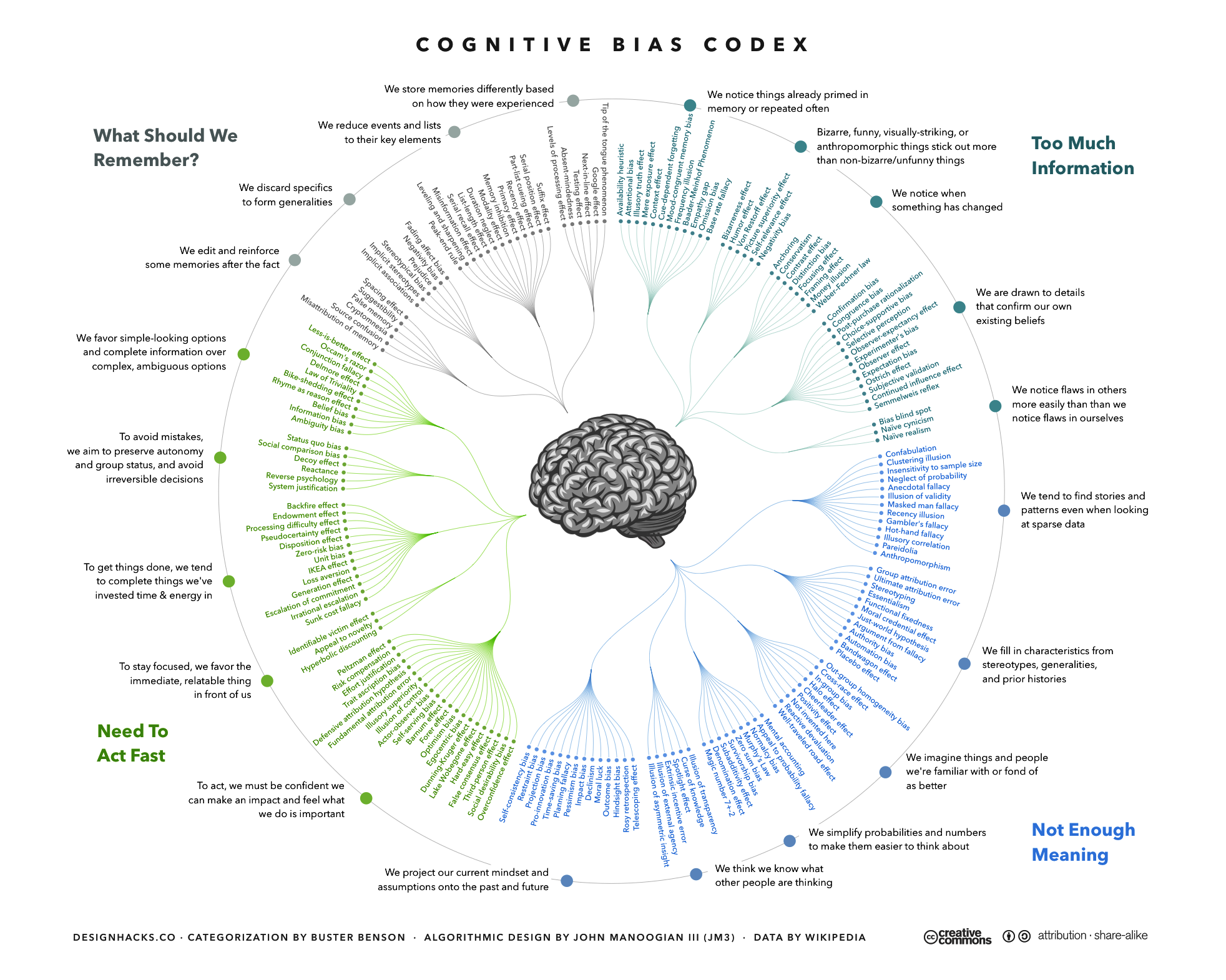Decoding Consumer Behaviour: Navigating The Maze of Cognitive Biases - Part 2.
 Ojo Emmanuel Oluwasanmi
Ojo Emmanuel Oluwasanmi
TL;DR
Categorising cognitive biases helps product leaders create user-friendly experiences by:
Spotting patterns
Customising solutions
Improving decisions
Building empathy
The five main categories of cognitive biases are:
Decision-Making Biases: Affect how users make choices.
Social Biases: Come from social interactions and group influence.
Memory Biases: Distort users' memories and interpretations of past events.
Attention Biases: Influence what users focus on and consider important.
Attribution Biases: Impact how users explain the causes of events or actions.
Welcome back , cognitive explorers! 👋
In our first article, we delved into the fascinating world of cognitive biases—those mental shortcuts that shape how we make decisions and interact with products. Today, we’re taking the a deeper dive by exploring how they influence consumer behaviour, product usage, and adoption. By understanding these categories, product leaders can design smarter, more user-centric experiences. Let’s dive in!
Why Categorise Cognitive Biases?
Like we have previously established, cognitive biases help our brains process information and make decisions quickly. While these shortcuts can be efficient, they often lead to errors in judgment. By categorising cognitive biases, we can:
Identify Patterns: Recognise recurring behaviours and decision-making tendencies.
Tailor Solutions: Develop targeted strategies to address specific biases.
Improve Decision-Making: Anticipate how biases might influence user behaviour and design accordingly.
Enhance Empathy: Better understand the subconscious factors that drive user actions.
The Major Categories of Cognitive Biases
1. Decision-Making Biases
These biases affect how users evaluate options and make choices.
Anchoring Bias: Users rely heavily on the first piece of information encountered.
Example: Showing a high "original price" alongside a discounted price leverages this bias.
Tip: Use anchors to set expectations, whether it’s pricing or features.
Framing Effect: Decisions are influenced by how information is presented.
Example: "Example: A feature labeled “Boost engagement by 30%” sounds better than “Reduce disengaged users by 30%.”
Tip: Frame messaging positively to emphasise benefits.
Sunk Cost Fallacy: Users stick with decisions due to prior investments, even when irrational.
Example: Staying with an outdated subscription service because of years of loyalty.
Tip: Highlight why switching to your product is worth it.
2. Social Biases
These biases stem from social interactions and group dynamics.
Bandwagon Effect: People adopt behaviours or products because others do.
Example: Viral trends like everyone buying the latest iPhone.
Tip: Leverage social proof to show widespread popularity.
Halo Effect: Positive impressions of one aspect influence views of the whole.
Example: Beautiful design makes a product seem more functional.
Tip: Invest in aesthetics for strong first impressions.
Ingroup Bias: Favouring products endorsed by one’s social group.
Example: A fitness app connecting users with similar goals.
Tip: Foster community through group-based features.
3. Memory Biases
These biases distort how users recall and interpret past experiences.
Availability Heuristic: Overestimating the importance of easily recalled information.
Example: Choosing a product because of frequent ads.
Tip: Ensure consistent advertising to boost recall.
Hindsight Bias: Believing an outcome was predictable after the fact.
Example: "I knew this product would succeed."
Tip: Share product milestones to shape user perceptions.
Rosy Retrospection: Remembering the past more positively.
Example: Nostalgia-driven marketing campaigns.
Tip: Use nostalgia to create emotional connections.
4. Attention Biases
These biases determine what users give their attention to and prioritise.
Negativity Bias: Giving more weight to negative experiences.
Example: A single bad review deterring buyers.
Tip: Address negative feedback promptly and highlight positive testimonials.
Selective Attention: Focusing on specific details while ignoring others.
Example: Eye-catching images overshadowing product details.
Tip: Balance visuals and information to ensure clarity.
Spotlight Effect: Overestimating how much others notice their actions.
Example: Hesitation to use a new feature for fear of looking incompetent.
Tip: Provide intuitive designs and supportive onboarding.
5. Attribution Biases
These biases affect how users assign causes to events or actions.
Fundamental Attribution Error: Blaming internal factors for others’ mistakes but external factors for one’s own.
Example: Blaming app design for errors while attributing personal missteps to distractions.
Tip: Build error-recovery features and clear instructions.
Self-Serving Bias: Crediting oneself for successes and external factors for failures.
Example: "I achieved my goal because I’m disciplined, not because of the app."
Tip: Celebrate user wins while emphasising your product’s role.
Wrapping It Up
Categorising cognitive biases gives product leaders a powerful toolkit to understand and anticipate user behaviour.
In the next article, we’ll dive deeper into specific biases, starting with the Bandwagon Effect, and explore how they directly impact product adoption.
Until then, keep designing for the quirks of the human mind!🧐
Subscribe to my newsletter
Read articles from Ojo Emmanuel Oluwasanmi directly inside your inbox. Subscribe to the newsletter, and don't miss out.
Written by

Ojo Emmanuel Oluwasanmi
Ojo Emmanuel Oluwasanmi
An experienced product manager making the world better one user experience per time.